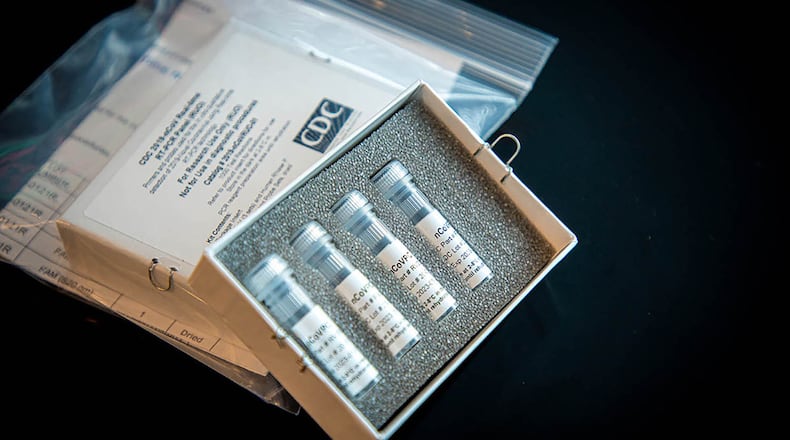However, such testing takes funding, testing supplies and coordination. The details of how this will be paid for was still not clear as of Thursday afternoon.
MORE: Miami County nursing home hot spot under ‘control,’ industry challenges remain
Ohio Governor Mike DeWine announced Tuesday that the Ohio National Guard units would be assisting in this effort.
“We must get a clearer picture of how extensive this virus is at long-term care facilities,” DeWine said. “With the help of the Ohio National Guard, we will be increasing our testing in an effort to protect our most vulnerable citizens and control the spread of the virus.”
Ohio National Guard is already providing medical support to Carlin House Assisted Living Center in Logan, which needed short-term support after staffing shortages related to COVID-19.
Ohio National Guard also completed a one-day mission last weekend supporting the Ohio Department of Veterans Services with medical personnel who collected COVID-19 tests at the Ohio Veterans Home in Georgetown.
As of Wednesday afternoon, the state’s preliminary mortality data reported 1,247 residents of Ohio’s long-term care facilities were reported to have died from the virus.
That total had included deaths only after April 15, which was when the state began tracking long-term care deaths by facility. The new 1,247 deaths includes includes the 878 deaths reported since April 15 and 369 residents who died before mid-April, when Ohio recorded only whether an individual had been in a nursing home, according updated health department statistics obtained by The Associated Press.
People are at increased risk for the virus when living in congregated settings and also when they have multiple underlying conditions, and nursing homes involve both of these factors.
U.S. Centers for Medicare and Medicaid, which is the federal nursing home regulator, set out new guidelines on May 18 saying restrictions in nursing homes can relax and open to visitors if they have weekly testing among other standards, though did not provide additional guidance on how to fund these tests.
American Health Care Association, a national trade group for nursing home owners, said if assuming $150 per test and assuming employment is the similar to last count on May 2019, it would cost a little under $25 million for one round of testing of workers and residents in Ohio.
MORE: Blood donations urged with more surgeries, summer approaching
For the Ohio effort, it is not clear who will be processing the tests or how they are going to be paid for. A message was left with the state seeking more information.
Kathryn Brod, CEO of LeadingAge Ohio, which represents nonprofit long term care providers such as nursing homes, said their members have been asking for testing and more PPE since early on in the pandemic.
“So we’ve been grateful that the state has been moving forward in this but I think that important thing to understand for congregate care facilities is that testing isn’t just a one-step process,” Brod said. “There’s the testing specimen collection, that is what the National Guard would be mobilized to do. But then there’s also the testing processing. Who’s going to process it? How quickly are you going to get results? Who is going to pay for that? That’s some pretty significant unknowns.”
There’s then other challenges, such as what the right approach is if someone tests positive. In an assisted living facility, for example, there might be infection control benefits to cohorting residents together on a unit but that would mean moving people from their home, which is different context than the way you can cohort infectious hospital patients to a specific unit of a hospital.
“You can’t just switch Mrs. Smith and Mrs. Jones in their rooms because those rooms are their homes,” Brod said.
By the numbers: COVID-19 and long-term care
$24.95 million: Industry’s estimate for one round of testing for Ohio nursing homes
70,000: Ohioans living in nursing homes
42,000: Ohioans in assisted living
Take survey on Ohio assisted living, nursing homes
For families of nursing home and assisted living residents, how are you keeping in touch with your family member during this time? Researchers at the Scripps Gerontology Center at Miami University want to hear from you to learn more about how loved ones are communicating. Their survey takes five to 10 minutes and can be found at bit.ly/Scripps-COVID19-LTCFamilySurvey.
Jane Straker, director of research at Scripps, said the goal is to learn what facilities are doing and how families are feeling about how things are going, and then create a quick report that can be shared with the public and providers.
Straker also hopes to pick up on innovations and ideas that can be shared, based on stories from families.
About the Author
